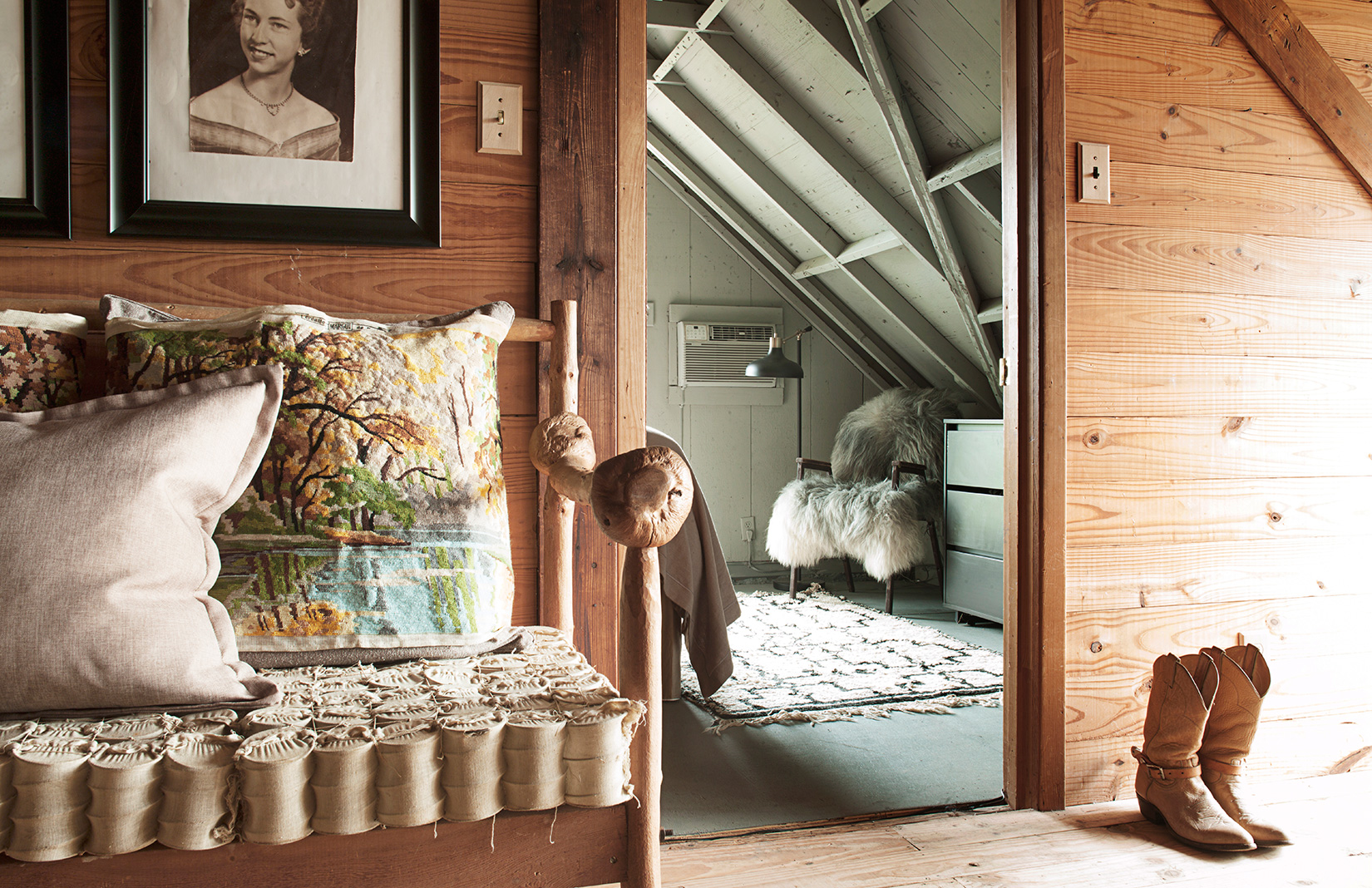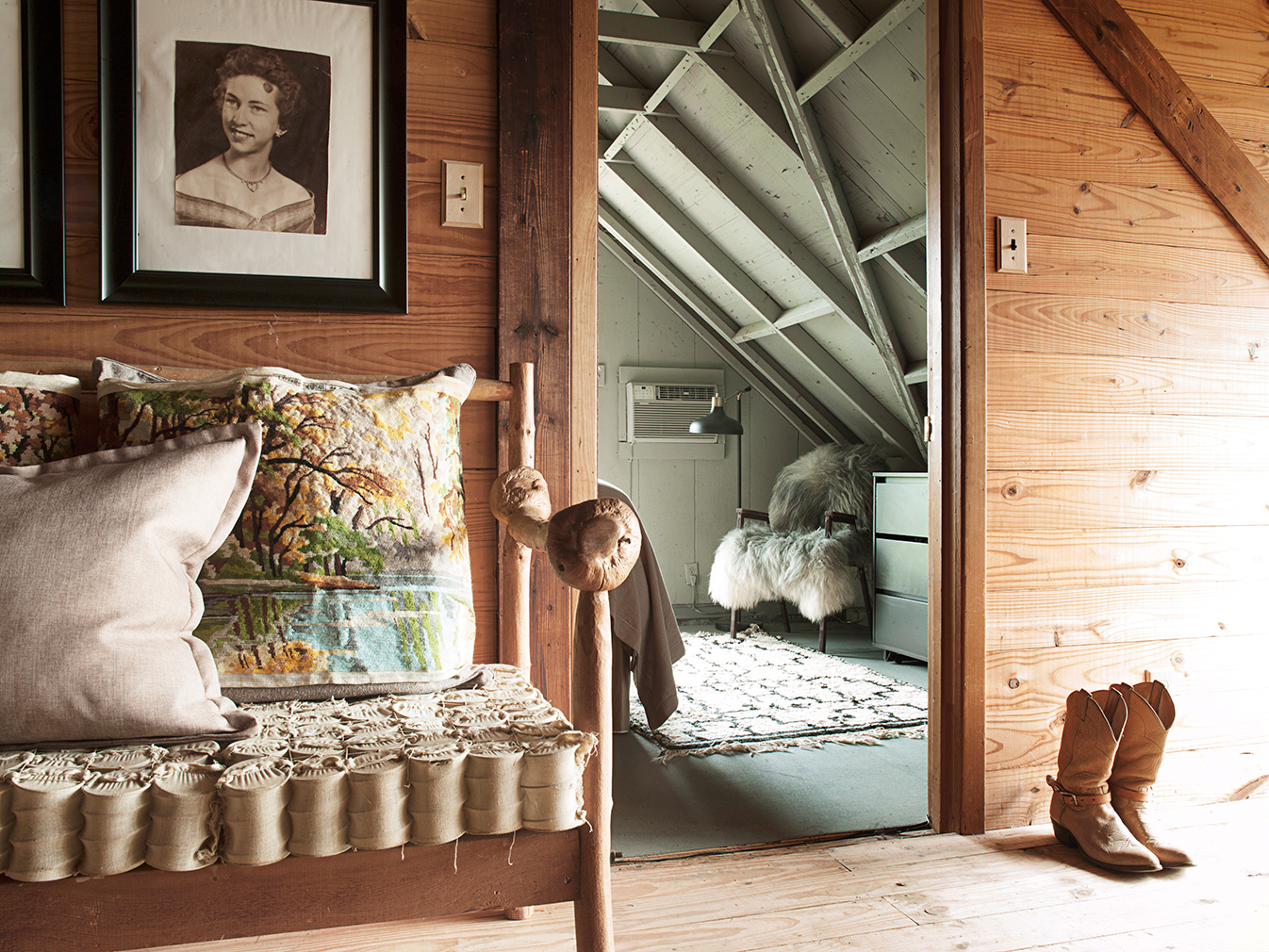
Towering arches welcome you to Castle Rock Mountain, the Texan ranch of social practice artist Monte Laster. Said to be the site of an old gold mine, its rugged terrain is dotted with stone cabins in varying states of ruin or revival.
Laster’s own home sits atop the mountain’s peak. Built in the early 19th-century, it served as a speakeasy during Prohibition and a hangout for Bonnie and Clyde, according to local legend. Now it doubles as the US nerve centre of his group F.A.C.E (French-American Creative Exchange).
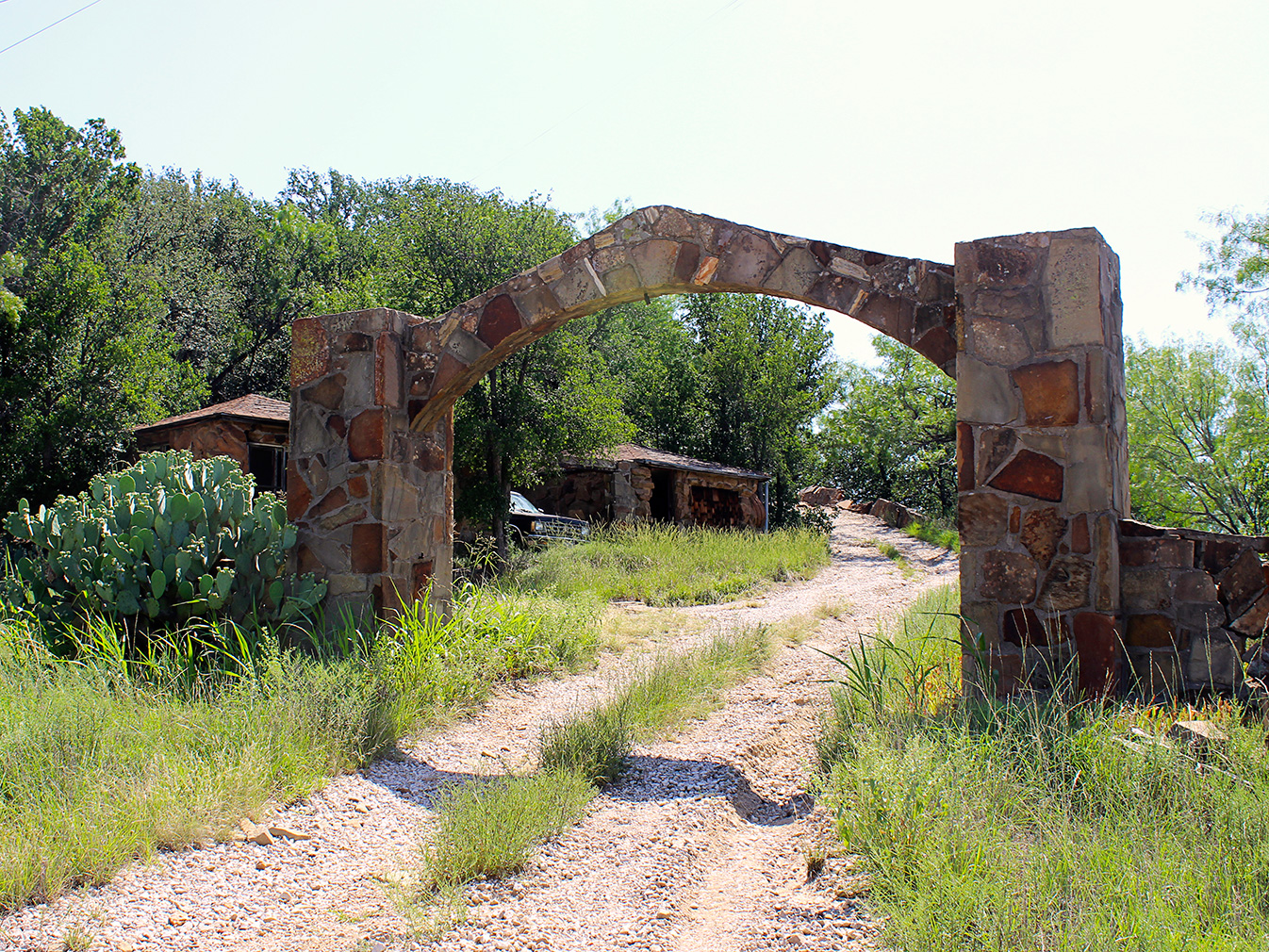
The artist purchased the property last year with the help of his collectors. ‘When I was a kid, we would drive past the Castle Rock Mountain to get to my uncle’s ranch,’ explains Laster, who has been living in Paris since 1989 and has exhibited everywhere from the Palais de Tokyo to the Dallas Museum of Art. ‘I said to myself that someday I would live in a place like that.’
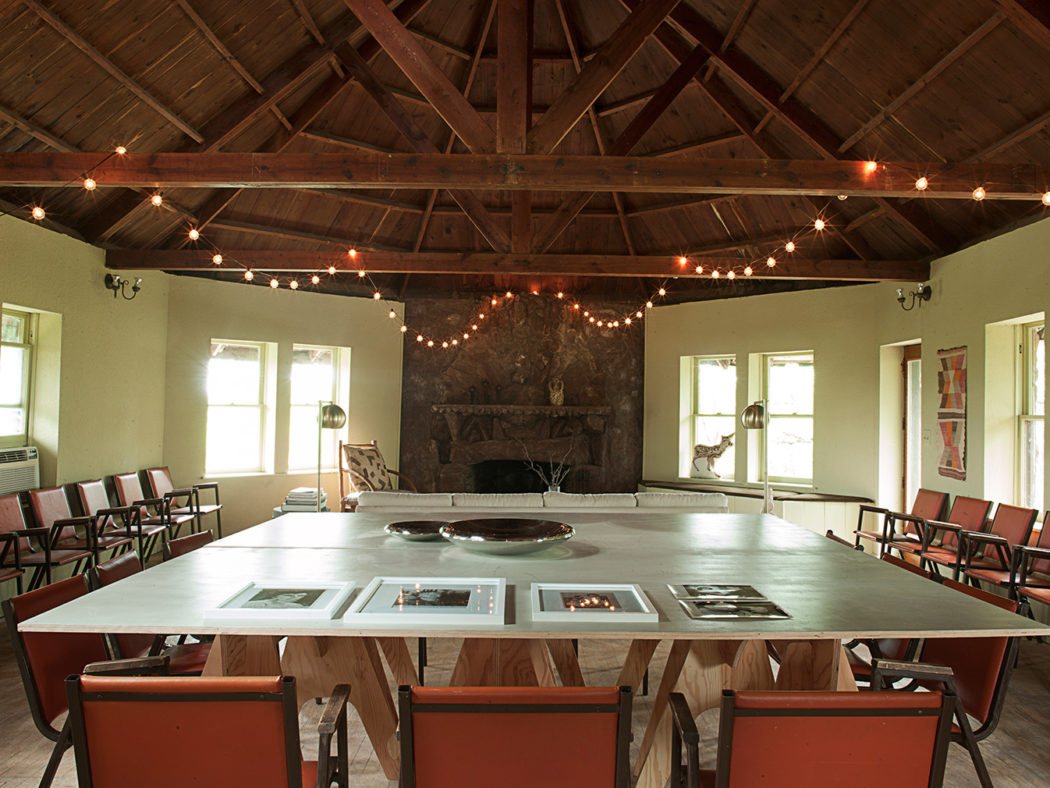
Photography: Joanna Maclennan
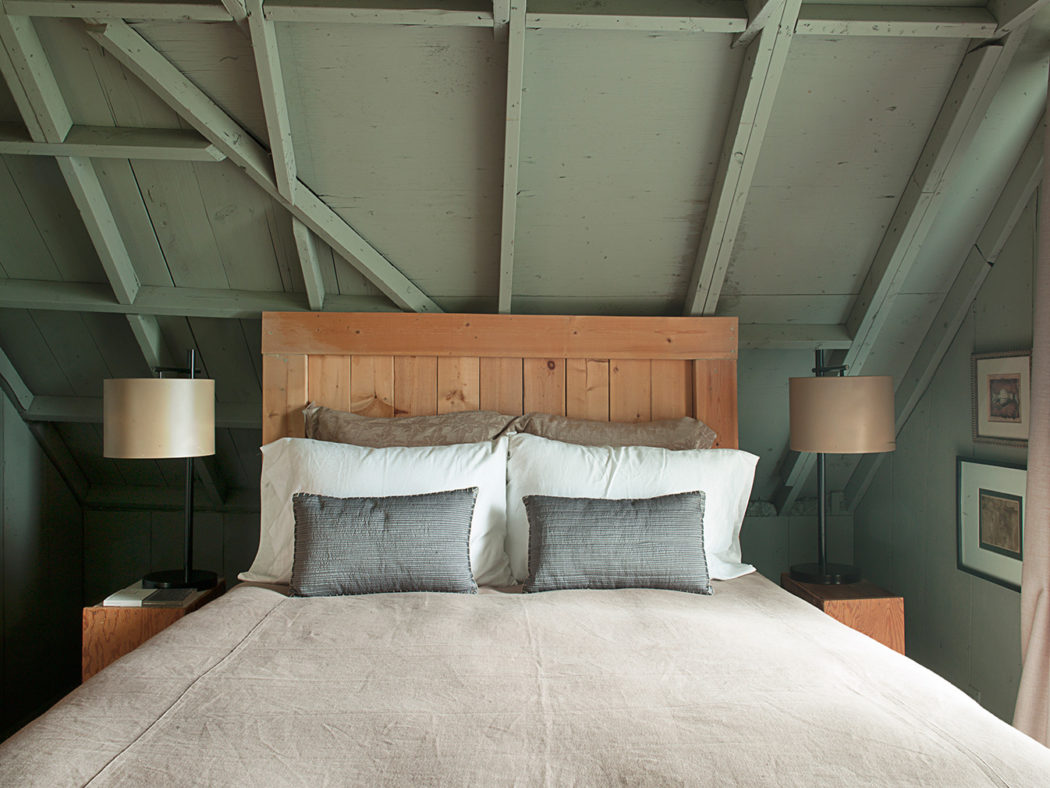
Photography: Joanna Maclennan
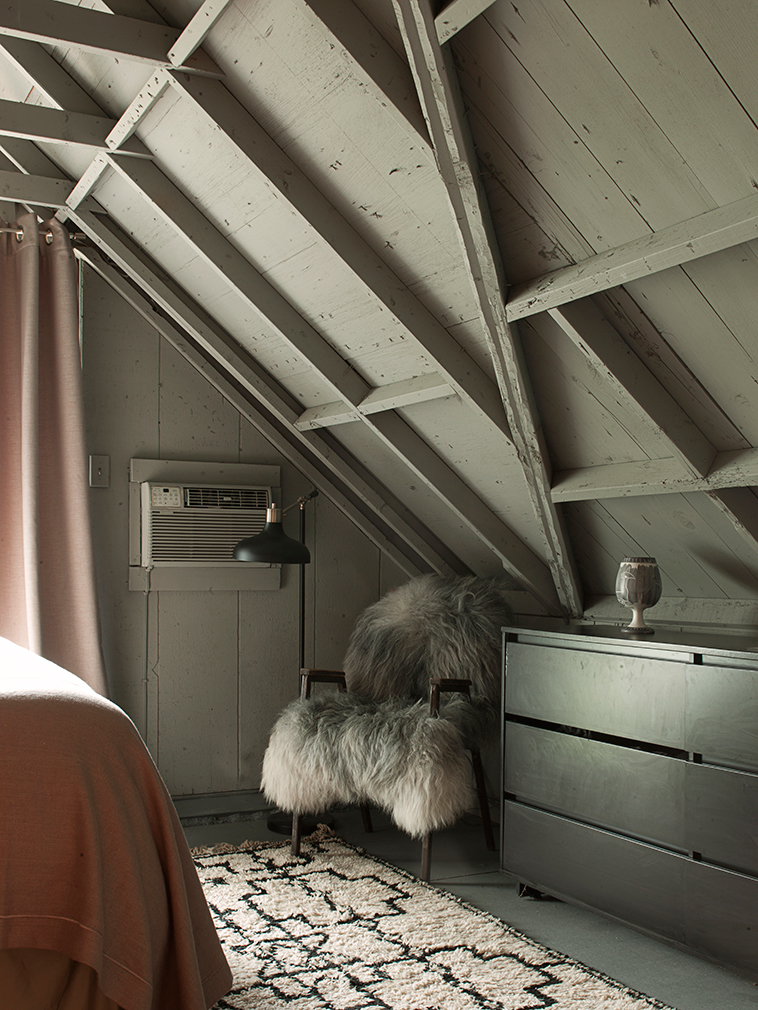
Photography: Joanna Maclennan
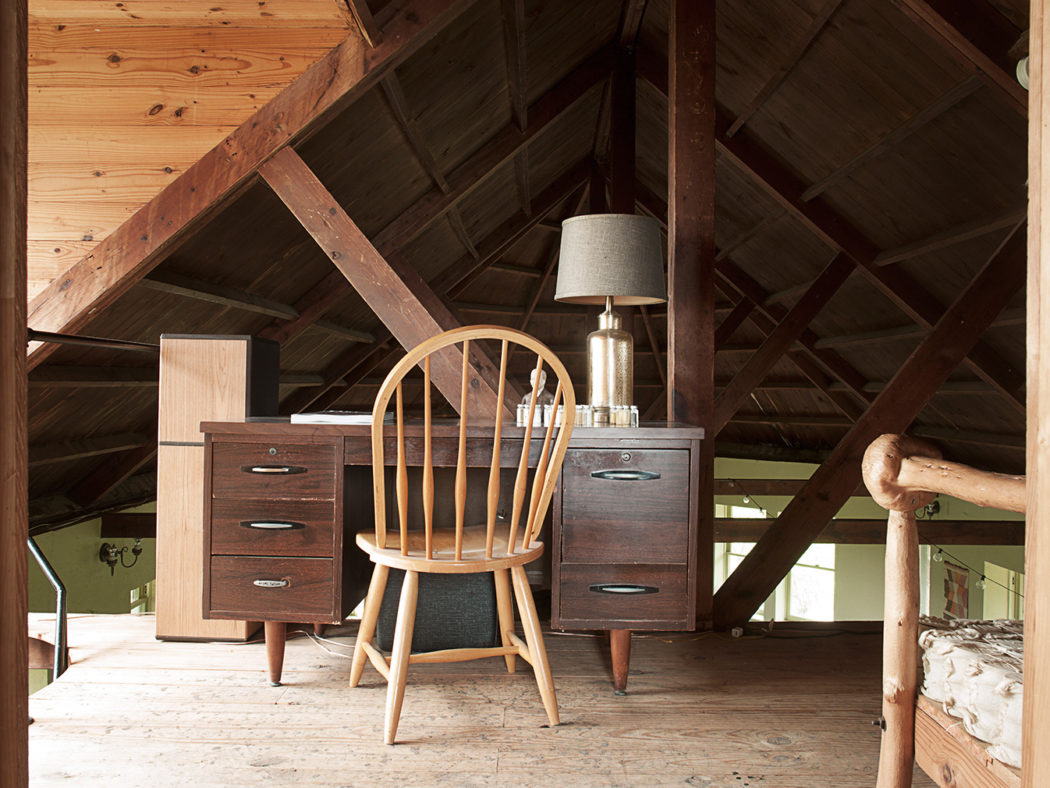
Photography: Joanna Maclennan
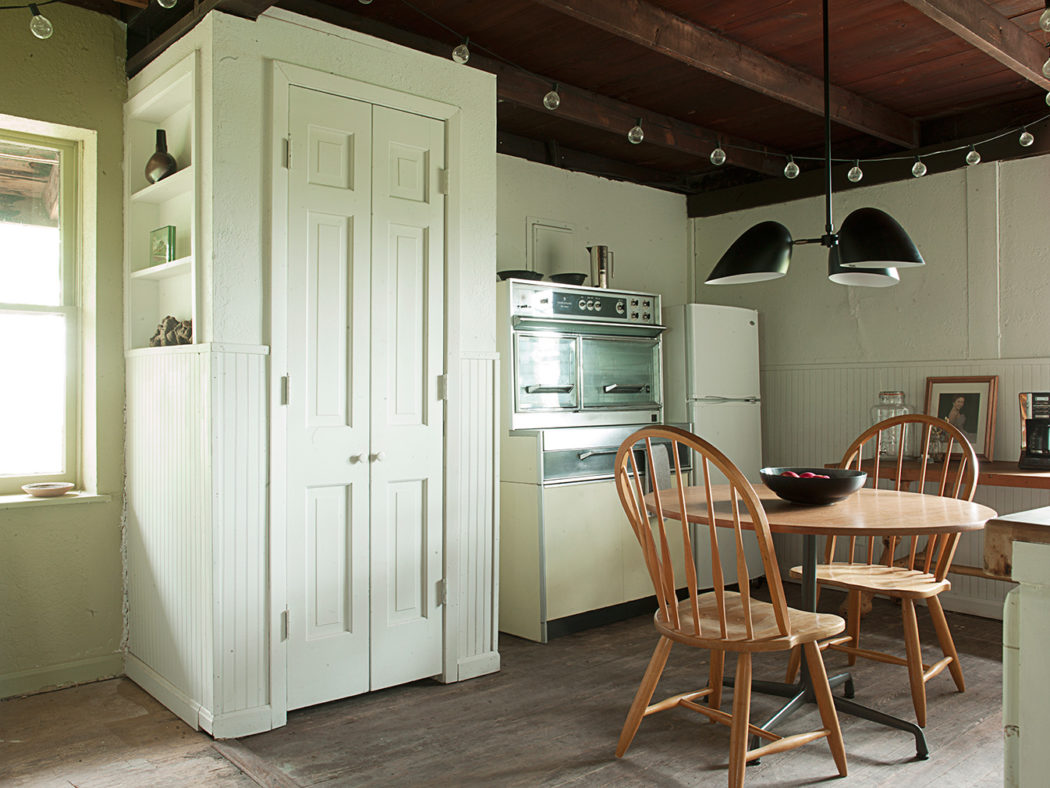
Photography: Joanna Maclennan
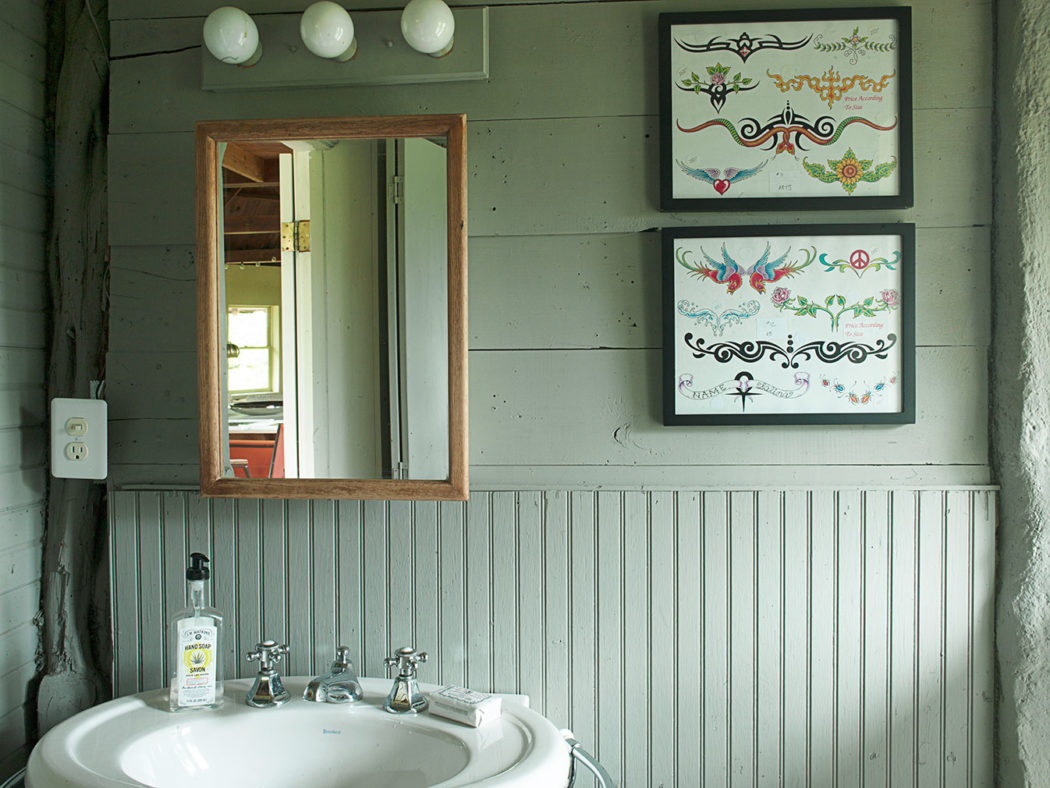
Photography: Joanna Maclennan
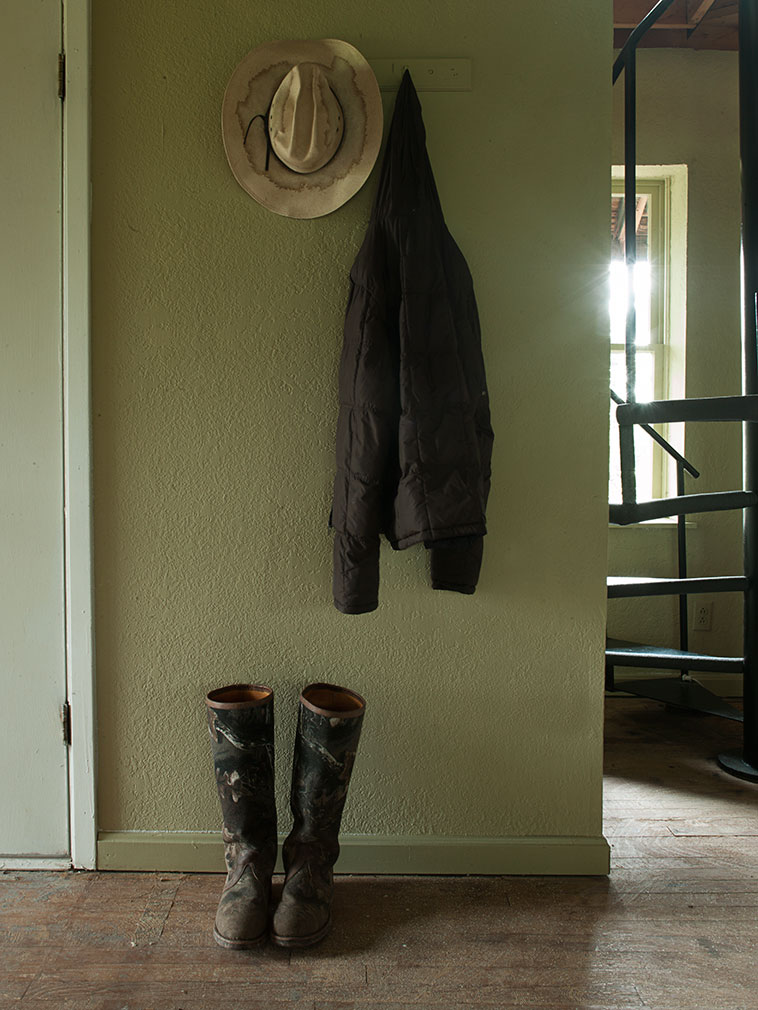
Photography: Joanna Maclennan
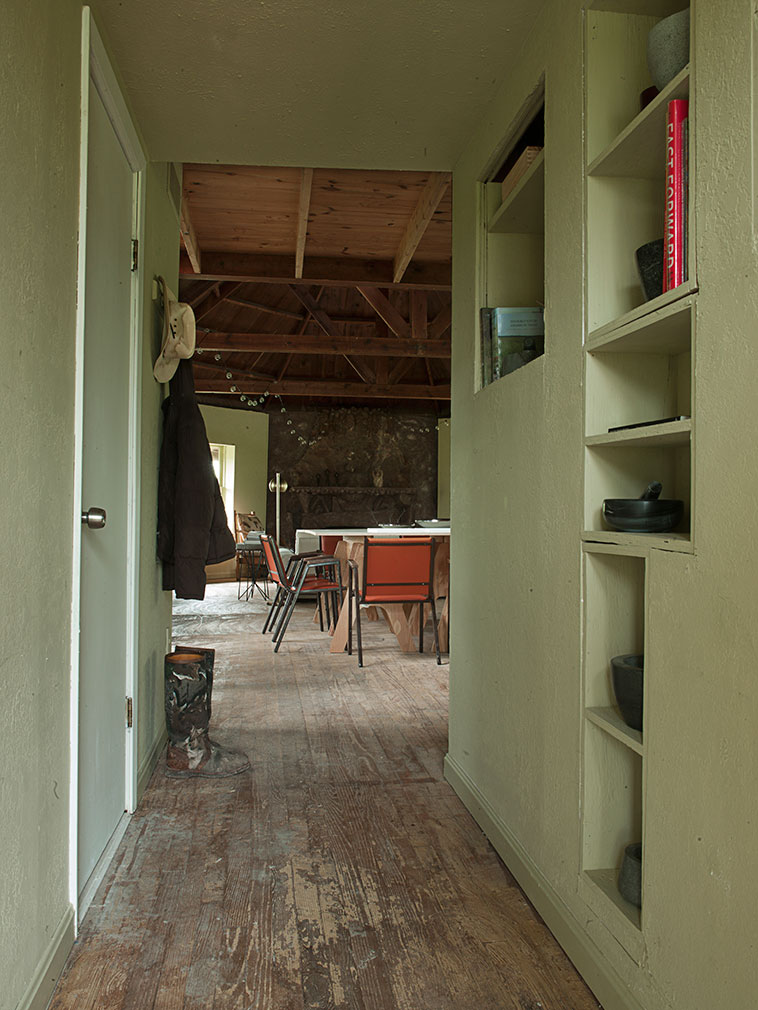
Photography: Joanna Maclennan
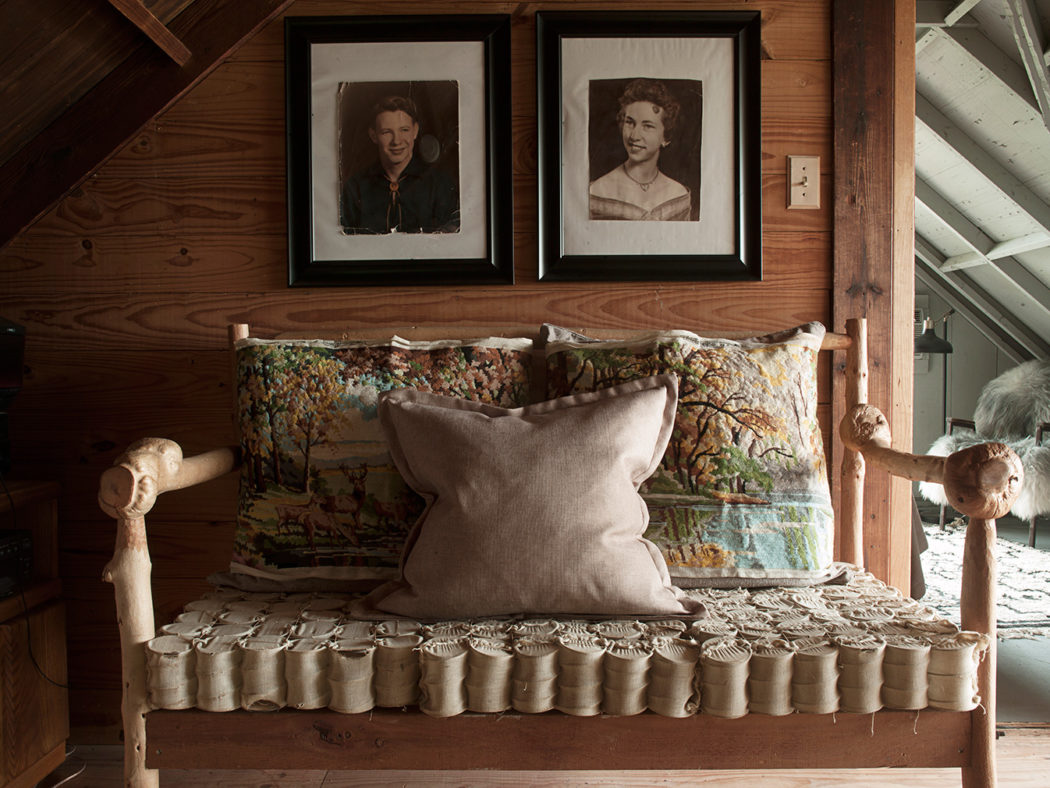
Photography: Joanna Maclennan
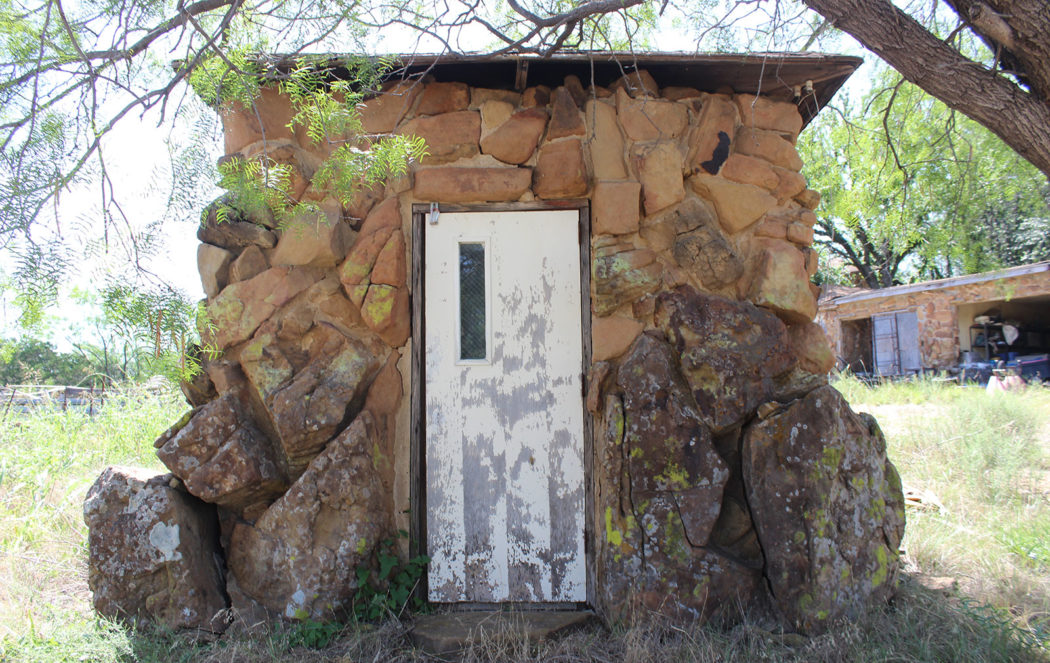
Photography: Joanna Maclennan
Laster renovated it and is slowly transforming the surrounding cabins – built in the 1920s as a tourist court motel – into a laboratory for international creative collaboration, the foundation of his work.
The artist divides his time between Texas and his base in Paris, an old mill in the socially stigmatised banlieue of La Courneuve, a suburb that has shaped his work.
He arrived there while looking for studio space in 1995 and chanced upon the 19th-century Moulin Fayvon. Like many of the surrounding housing blocks in the infamous ‘Cité des 4000’, it was on its way to being condemned by the local authorities.
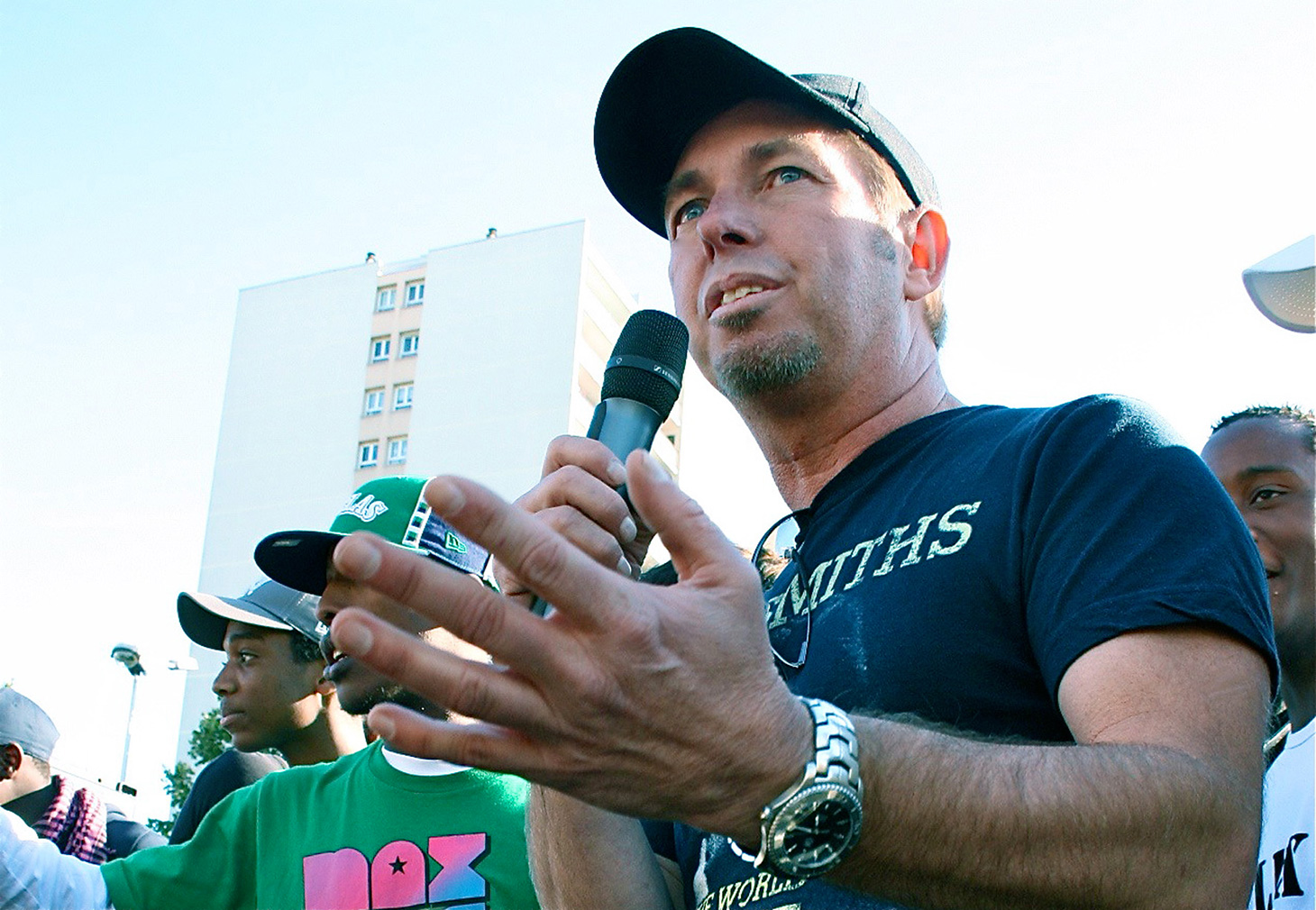
‘When I first set up my studio in the mill, my creative process was personal and introspective,’ he says. ‘But when the authorities demolished a nearby block with 500 apartments in it, that was a huge upheaval for me. It was hard to make sense of why this was happening and where these people would go. That prompted me to open my studio to the community and make it a place where people could exchange ideas.’
Laster encouraged La Courneuve residents to chronicle the neighbourhood’s destruction, while uniting them with poetry readings, workshops and concerts. His work is often called ‘social sculpture’, a concept developed by German artist Joseph Beuys, whose ‘appeal for an alternative’ called for artists to come together and propose new solutions to social issues.
Since founding F.A.C.E in 2001, Laster’s taken French rappers to New York and American rappers to Paris. He hit major public attention with his work Banlieue is Beautiful in 2014, for which he bought musicians and poets from La Courneuve to the Palais de Tokyo for a three-day festival.
‘My work is a perpetual performance,’ he says.
It was only a matter of time before it he’d open an official US base for F.A.C.E. Here, he leads us around Castle Rock Mountain – a social sculpture on a giant scale.
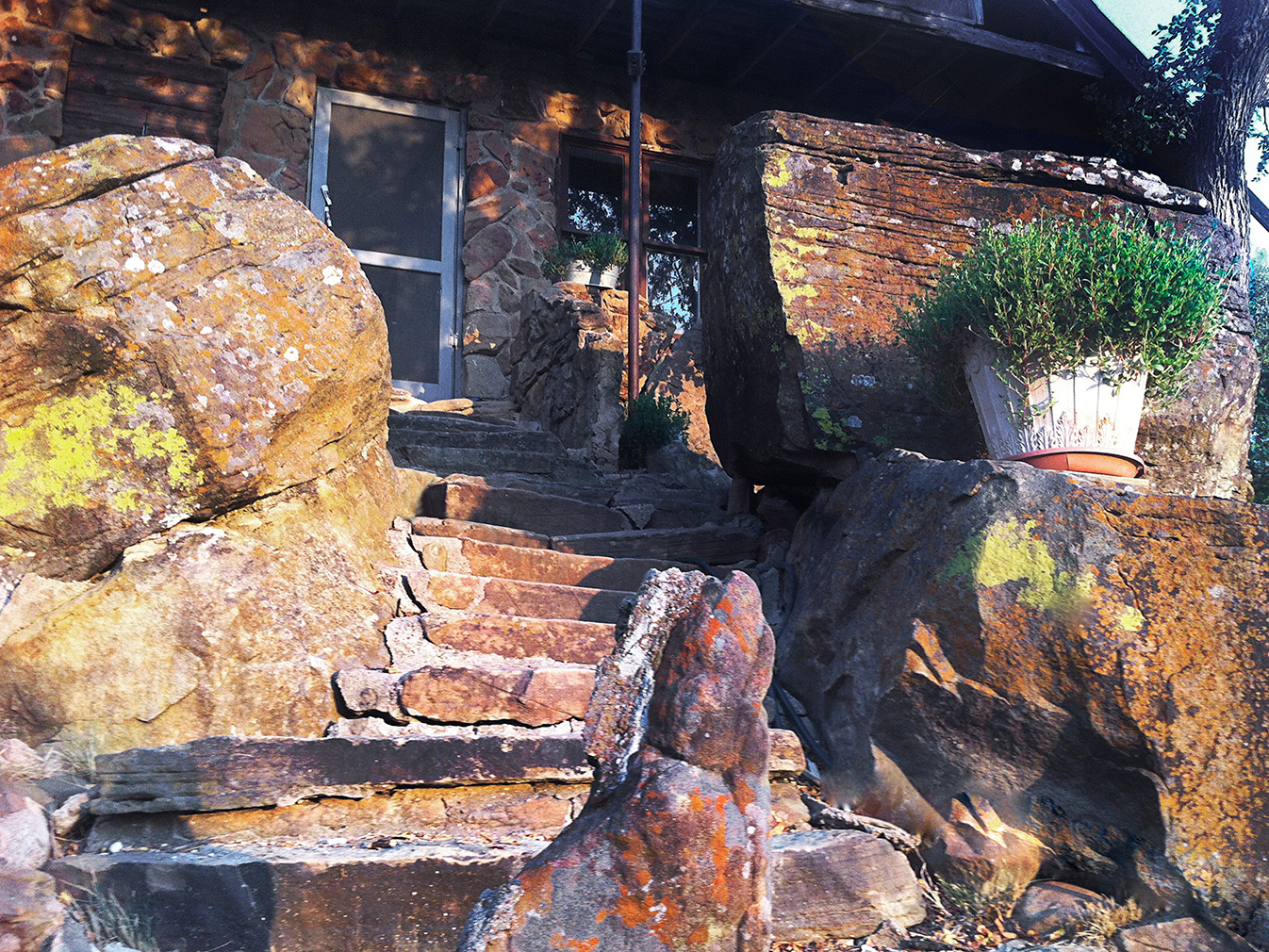
What does a home mean to you?
Monte Laster: A space only becomes a home to me when there are other people in it. A connection between people, place and action is essential. To me, a home is also a protective sphere that permits things to happen.
Do you ever crave privacy?
My private space is my bedroom up in the loft. Having a small space that’s quiet, peaceful and comes with a beautiful view of the valley is all I need.
Do you see your homes as part of your work?
Yes, they’re the most physical forms of my work… and the most long-standing manifestations of it.
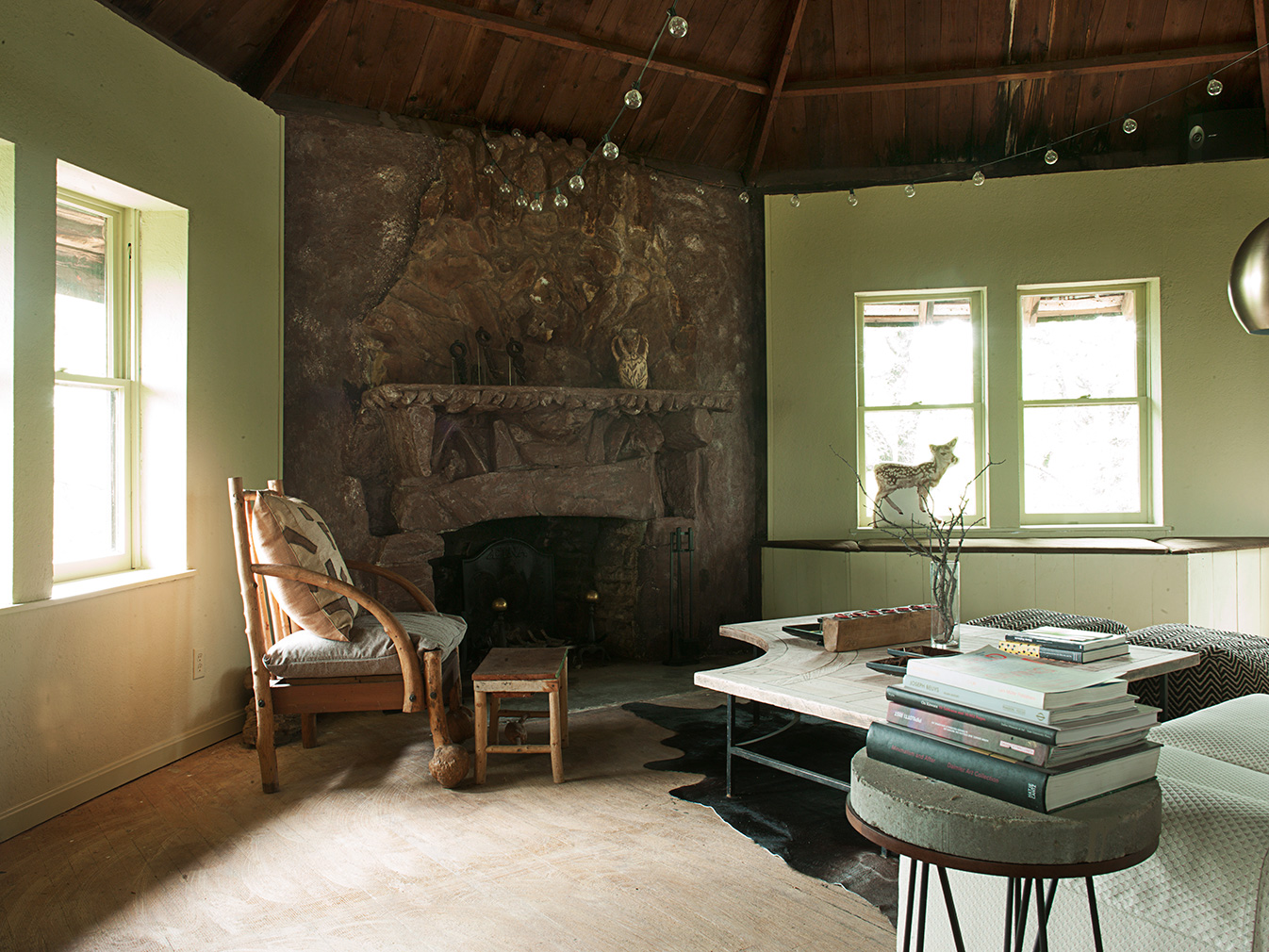
How did you furnish Castle Rock Mountain?
I had no money after buying Castle Rock so almost all of the furnishings came from online auctions. I bought the 10 ft midcentury sofa from Craigslist for $200 and drove three hours to pick it up. I like things that have a history.
The 1950s oven was the only thing left in the house when I bought it. It’s very space age. The burners are in a drawer, which you pull out. It’s a space efficient device that works perfectly.
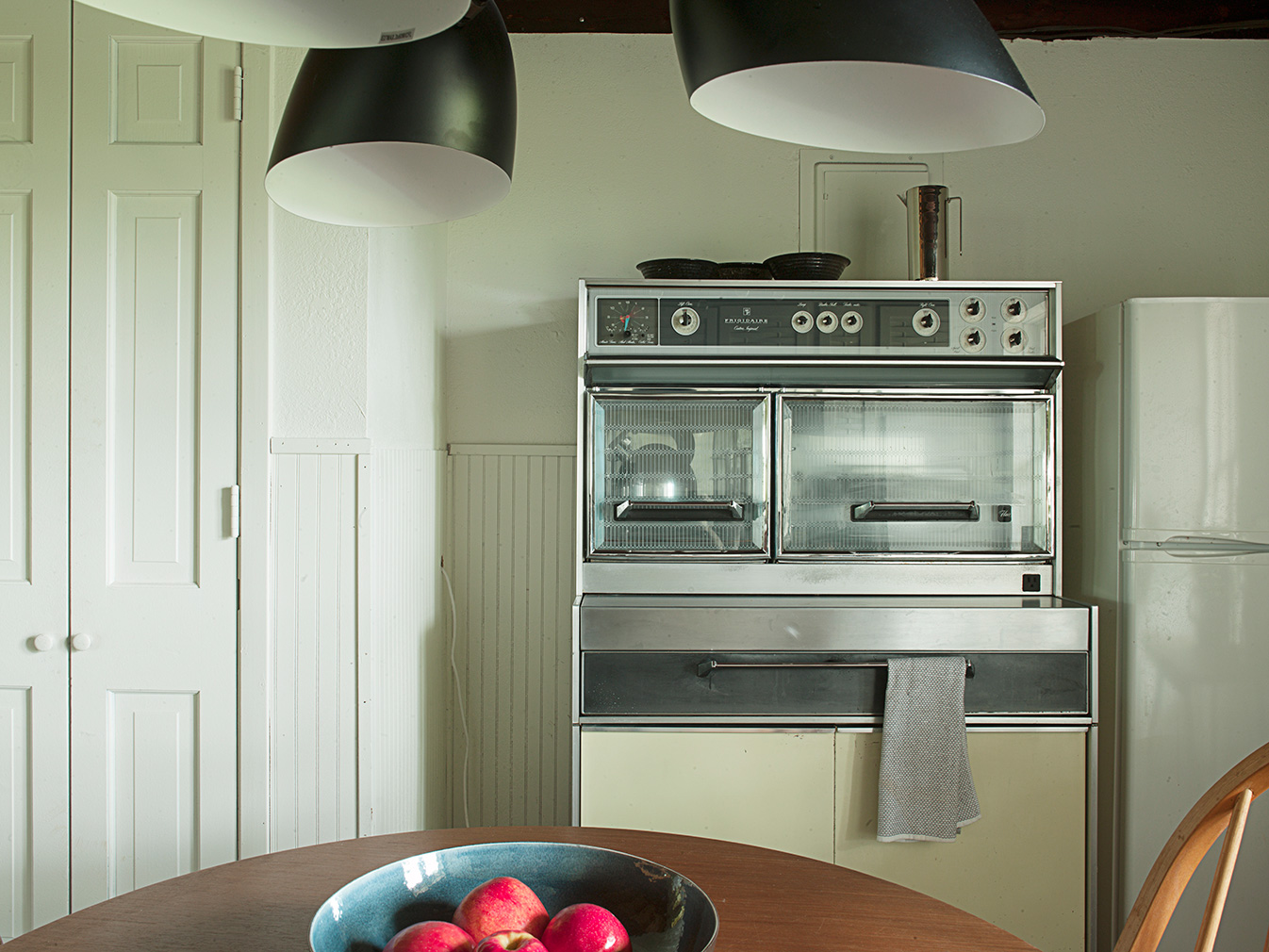
What do you like best about the property?
I love the arches on the gates. To find this type of thing in Texas is rare. They’re completely intact and give the place a majestic feel. If they were destroyed, it would feel like Castle Rock had lost some of its soul.
What’s happening at Castle Rock right now?
We’re currently converting the old grocery store into a gallery, which will hold its first exhibition in January. People from F.A.C.E USA are always here, and we will soon host our first artist-in-residence: John L Partesius. He’s a young videographer from the area who will create a film shot by drone about Castle Rock and the visit of five young people from France. After his January exhibition, he’ll head to to Paris for a residency in the mill.
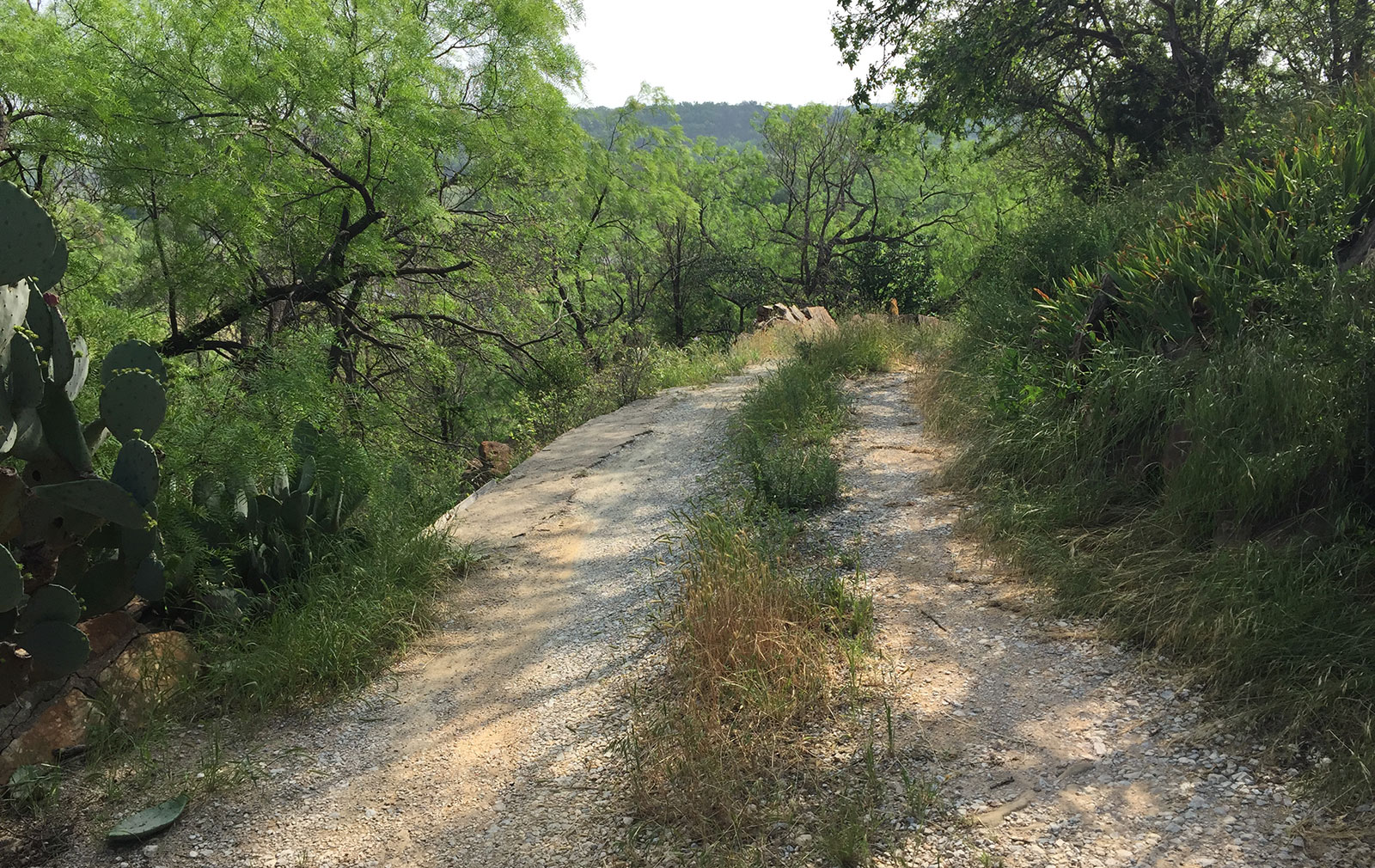
Artists like Theaster Gates and Assemble Studio are also engaging with communities in interesting ways. Is the notion of social sculpture gaining momentum?
Theaster Gates was one of first to gain international recognition for this idea of participation with marginalised communities. When I started going in this direction, an art critic told me I was committing career suicide. It’s ironic that I thought I was essentially quitting the art world. I never thought my work would be validated – or that I’d end up doing a project with the Louvre.
If you could inhabit any space across the world besides your own, what would it be?
I fantasised about a 12th-century church that was for sale in the South of France for a long time. It was vast, completely empty and had amazing architectural details. I thought it could be the second base for F.A.C.E. but, in the end, I knew that Texas was the place to be. Buying Castle Rock Mountain allowed me to bring together two essential parts of my own life, while creating a juxtaposition between contexts: urban France and rural Texas. This adds to the concept of ‘rupture with normality’ that pops up constantly in my work.
Read next: Inside the home of Michael Landy, the artist who destroyed all his possessions.




